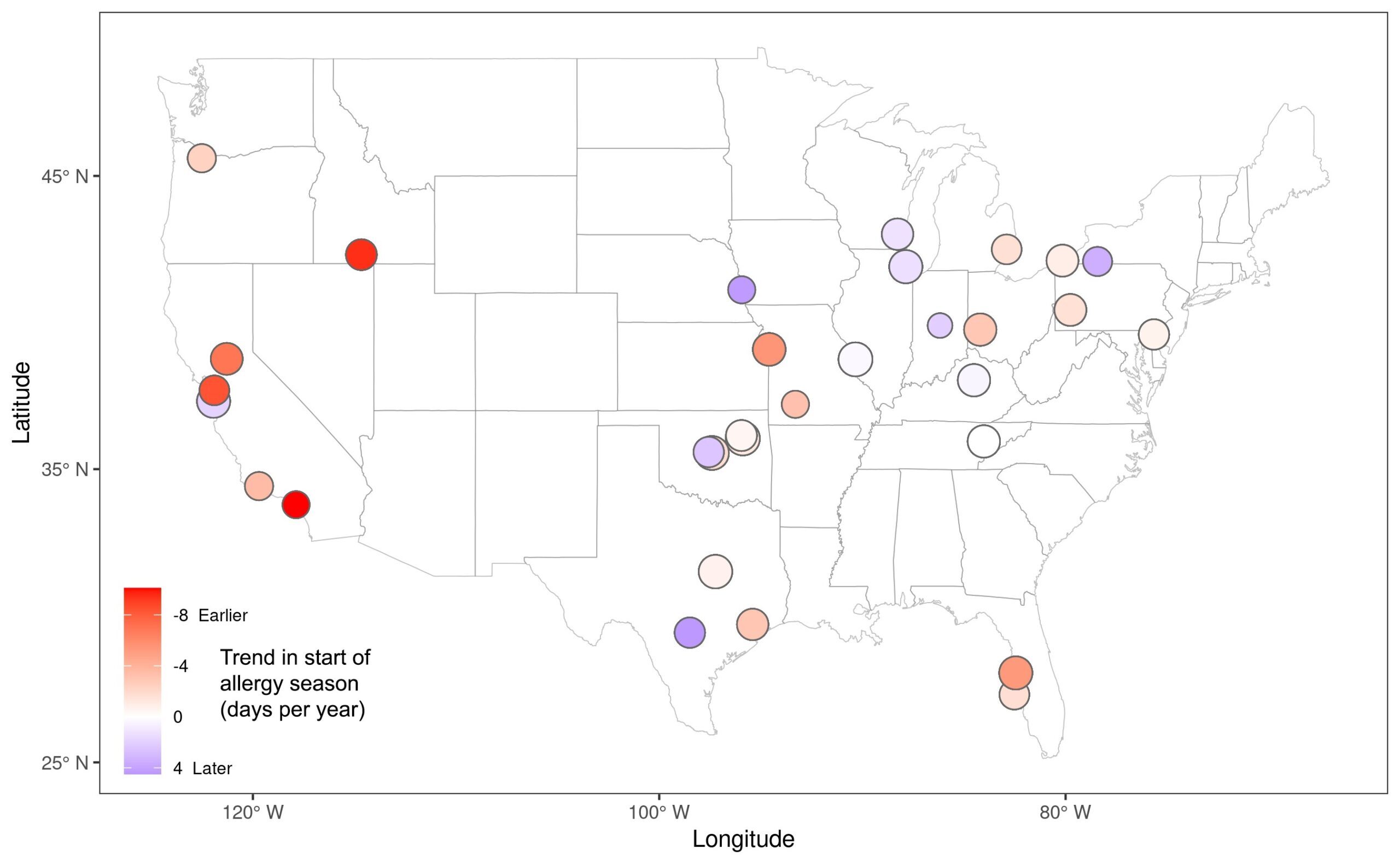Zhu K., Woodall C.W., Clark J.S. (2012). Failure to migrate: lack of tree range expansion in response to climate change. Global Change Biology, 18, 1042-1052.
Failure to Migrate
by David Malakoff, Conservation Magazine, October 18, 2011
Trees can’t migrate – but forests can. Indeed, many climate scientists have predicted that as temperatures warm, plant populations will respond by shifting to higher elevations and poleward toward cooler, higher latitudes. Now, a new study examines whether U.S. forests are indeed migrating north, and comes up with some potentially worrying findings.
The migration concept comes down to seeds and seedlings, Kai Zhu and James S. Clark of Duke University in North Carolina and Christopher W. Woodall of the U.S. Forest Service’s Northern Research Station in Minnesota note in Global Change Biology. As temperatures warm, for example, the southern edge of the range for some tree species could begin to erode as adult trees die and seeds left behind in the soil can’t sprout. In contrast, at the northern edge, the species could begin to creep north, as seedlings are able to gain a root-hold in a newly favorable climate. Although warm zones appear to have shifted north by up to 100 kilometers in parts of the United States, however, previous studies have failed to find forests moving north – although there are signs that some trees are shifting to higher elevations.
To take a fresh look for migrating forests, the researchers turned to a massive data set compiled by the Forest Service’s Forest Inventory and Analysis program. They focused on data on 92 tree species found in more than 43,000 inventory plots in 31 eastern states. Then, they looked at the relative distributions of seedlings, saplings and large trees, and factored in things like seed characteristics, and changes in climate and precipitation.
Although the results come with plenty of caveats, they suggest that forests are failing to migrate. Instead, nearly 59% of the tree species showed “the pattern expected for a population undergoing range contraction, rather than expansion, at both northern and southern boundaries.” About 21% appeared to be shifting northward, while about 16% appeared to be shifting southward. Just over 4% appeared to be expanding both north and south. In addition, there was “no consistent evidence that population spread is greatest in areas where climate has changed most; nor are patterns related to seed size or dispersal characteristics.”
The “evidence for climate-driven migration is essentially absent in this large analysis,” they conclude. “Patterns are more consistent with range contraction of eastern U.S. tree species than with northward migration.” And that should be “cause for concern,” they add, “given the temperature trends already underway during the 20th century.” Taken together, they write, the results “do not inspire confidence that tree populations are tracking contemporary climate change.”








